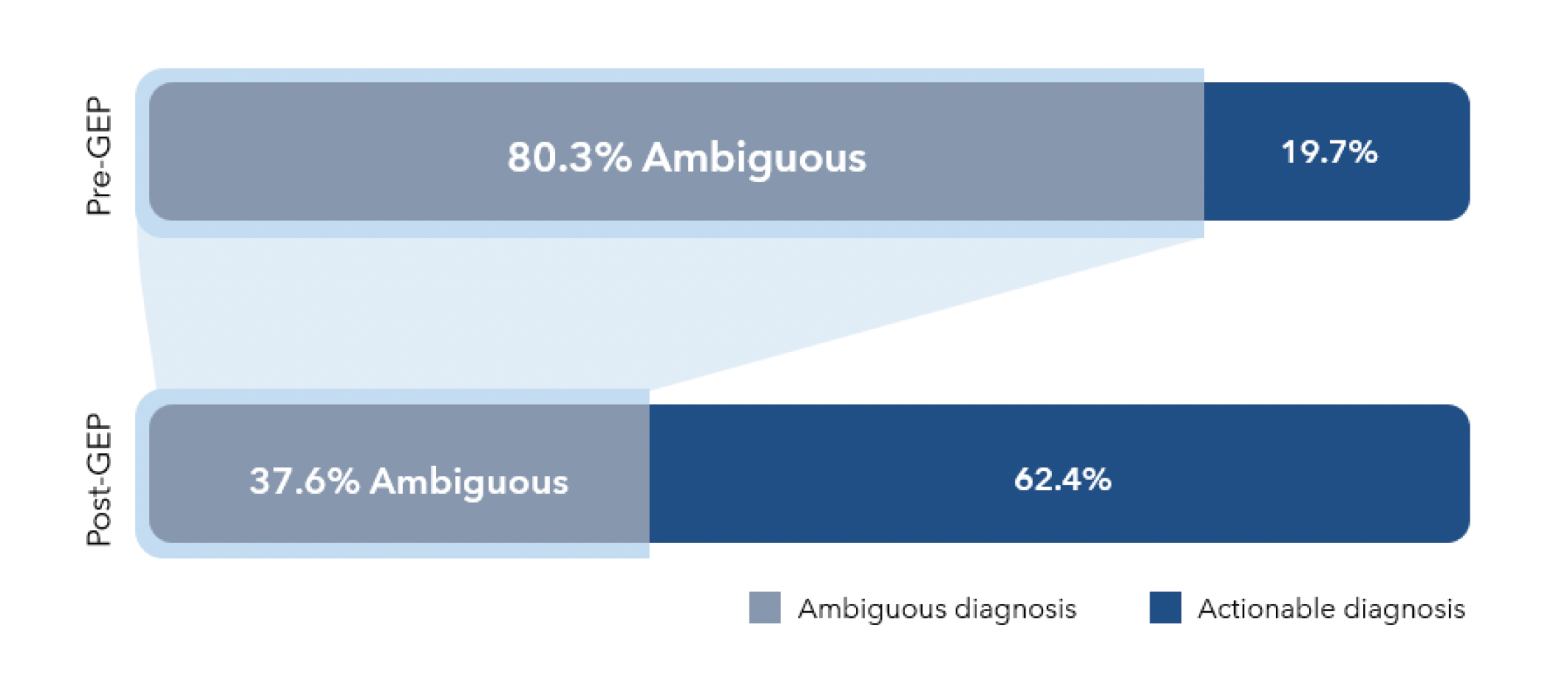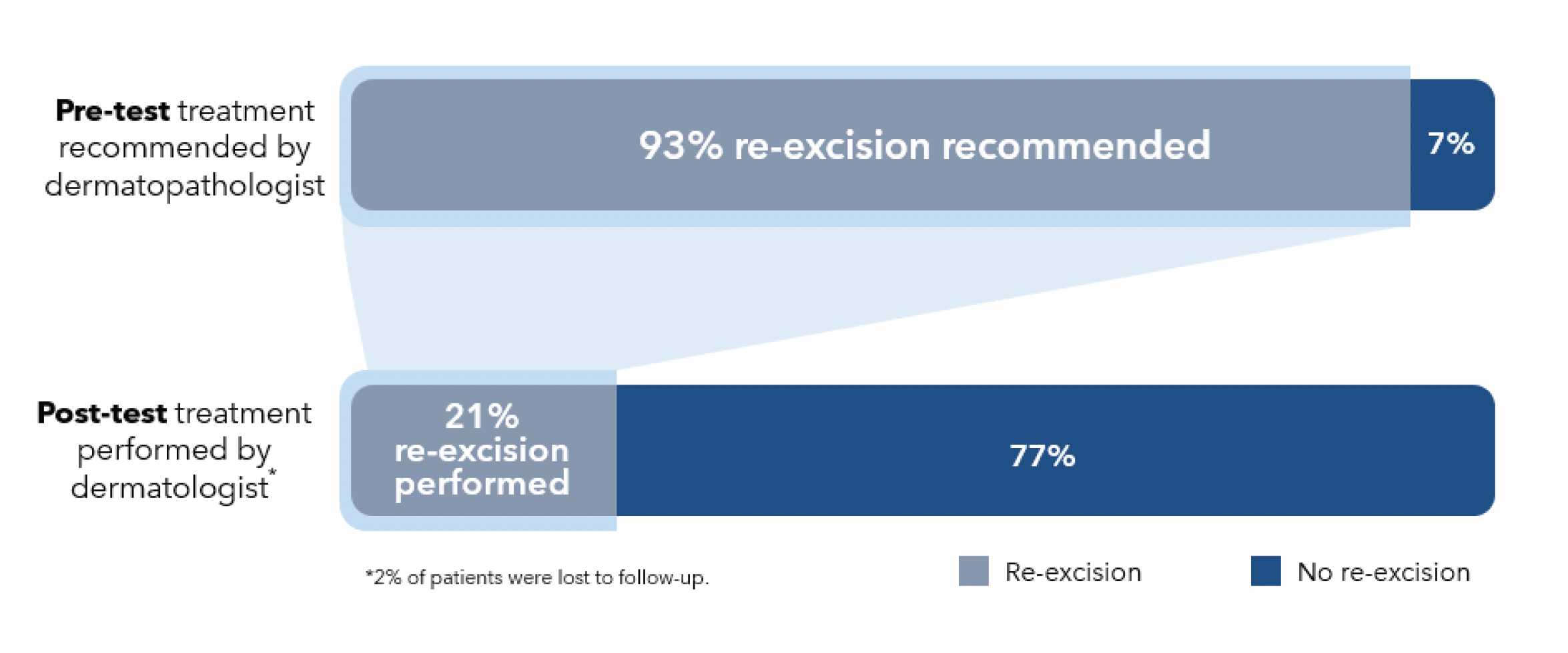Practice Integration
Clinical evidence supporting the integration of gene expression profiling (GEP) testing
MyPath Melanoma is a clinically validated, accurate and objective GEP test intended to resolve diagnostic ambiguity for melanocytic lesions of uncertain malignant potential.
The clinical utility of the MyPath Melanoma score has been evaluated in two separate studies to best represent multiple aspects of the diagnostic and treatment paradigms. These studies, with experienced dermatopathologists, demonstrate that use of the test increases the number of definitive diagnoses, decreases classification of lesions as “indeterminate,” and produces substantial changes in patient treatment.
Incorporation of GEP results aids dermatopathologists in reducing the rate of ambiguous diagnoses
In a cohort of 218 difficult-to-diagnosis melanocytic lesions, the majority were given an ambiguous diagnosis by dermatopathologists. By incorporating the results of GEP testing, the rate of ambiguous diagnoses was reduced by 42.7%. This reduction demonstrates the clinical utility of GEP testing in the diagnosis of challenging melanocytic lesions.

When GEP test results are benign, dermatologists reduce the rate of re-excision
When a definitive diagnosis cannot be reached, dermatopathologists typically recommend re-excision. However, when GEP testing returned a benign result, dermatologists reduced the rate of re-excision by 72% compared to the original recommendation.

Supported by guidelines
GUIDELINES FOR CUTANEOUS MELANOMA PRINCIPLES OF MOLECULAR TESTING
The NCCN guidelines describe the utility of diagnostic ancillary testing, including GEP, to aid in differentiating benign from malignant lesions. These tests facilitate a more definitive diagnosis and guide treatment decisions in lesions that are diagnostically ambiguous
APPROPRIATE USE CRITERIA FOR ANCILLARY DIAGNOSTIC TESTING IN DERMATOPATHOLOGY
The ASDP’s appropriate use criteria committee has designated six key clinical scenarios in dermatopathology as "majority usually appropriate" for ancillary diagnostic GEP testing. These scenarios include melanocytic lesions in adult and pediatric patients for which a distinction between benign melanocytic nevi and melanomas cannot be made
GUIDELINES OF CARE FOR THE MANAGEMENT OF PRIMARY CUTANEOUS MELANOMA
The AAD supports the use of ancillary diagnostic molecular techniques (e.g., GEP, CGH, FISH) for equivocal melanocytic neoplasms. These tests may help to differentiate benign nevi from cutaneous melanomas, including atypical Spitz tumors.
NCCN Guidelines Version 3. 2022. Melanoma: Cutaneous. Fung et al., J Cutan Pathol. e-pub 18 Sept 2021;1-15. Swetter et al., 2019;80(1):208-250.

